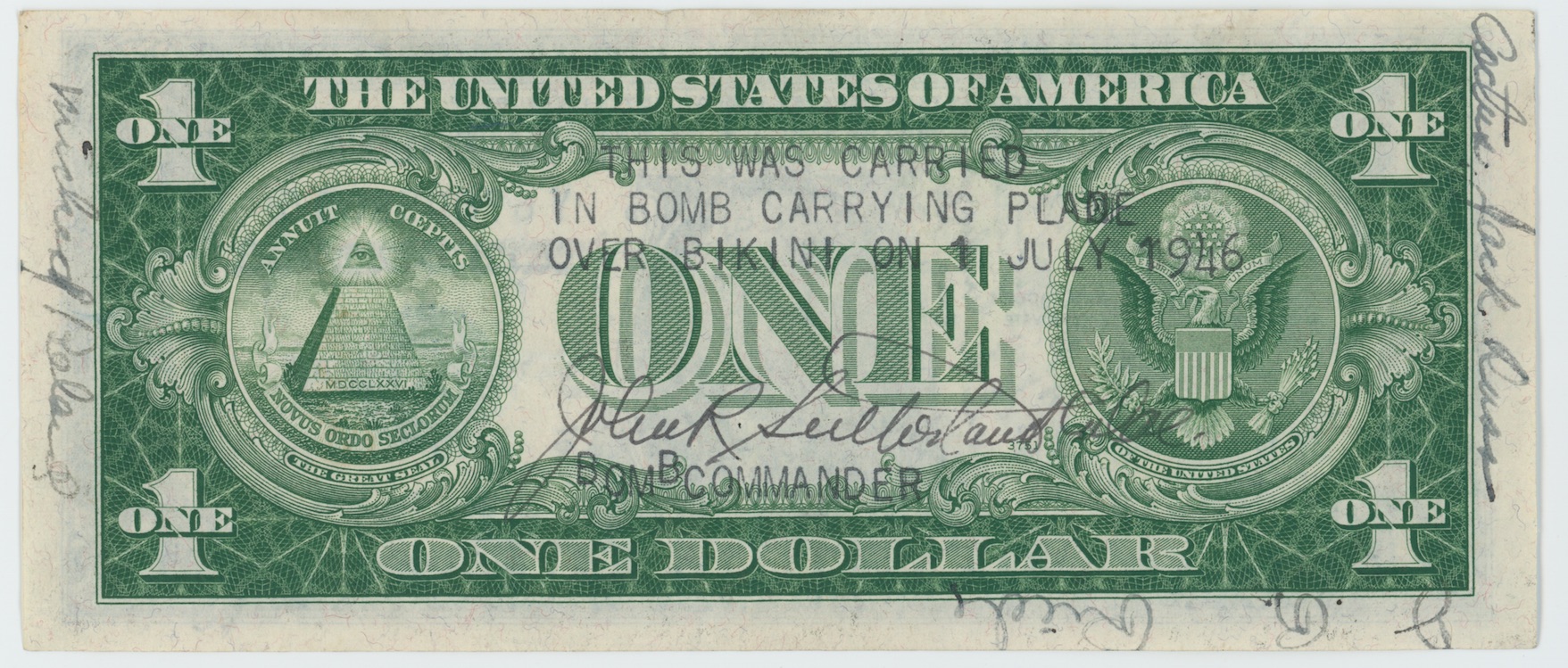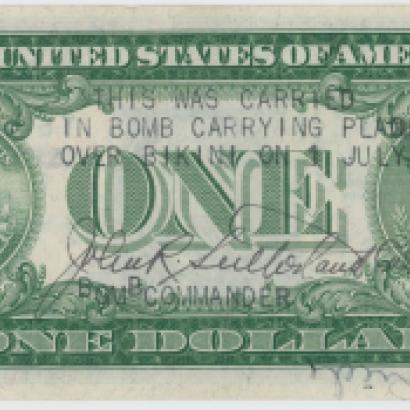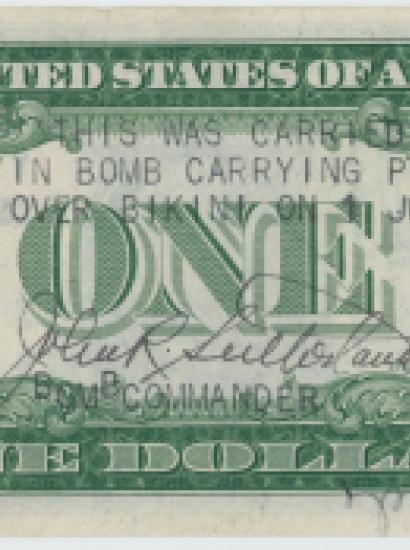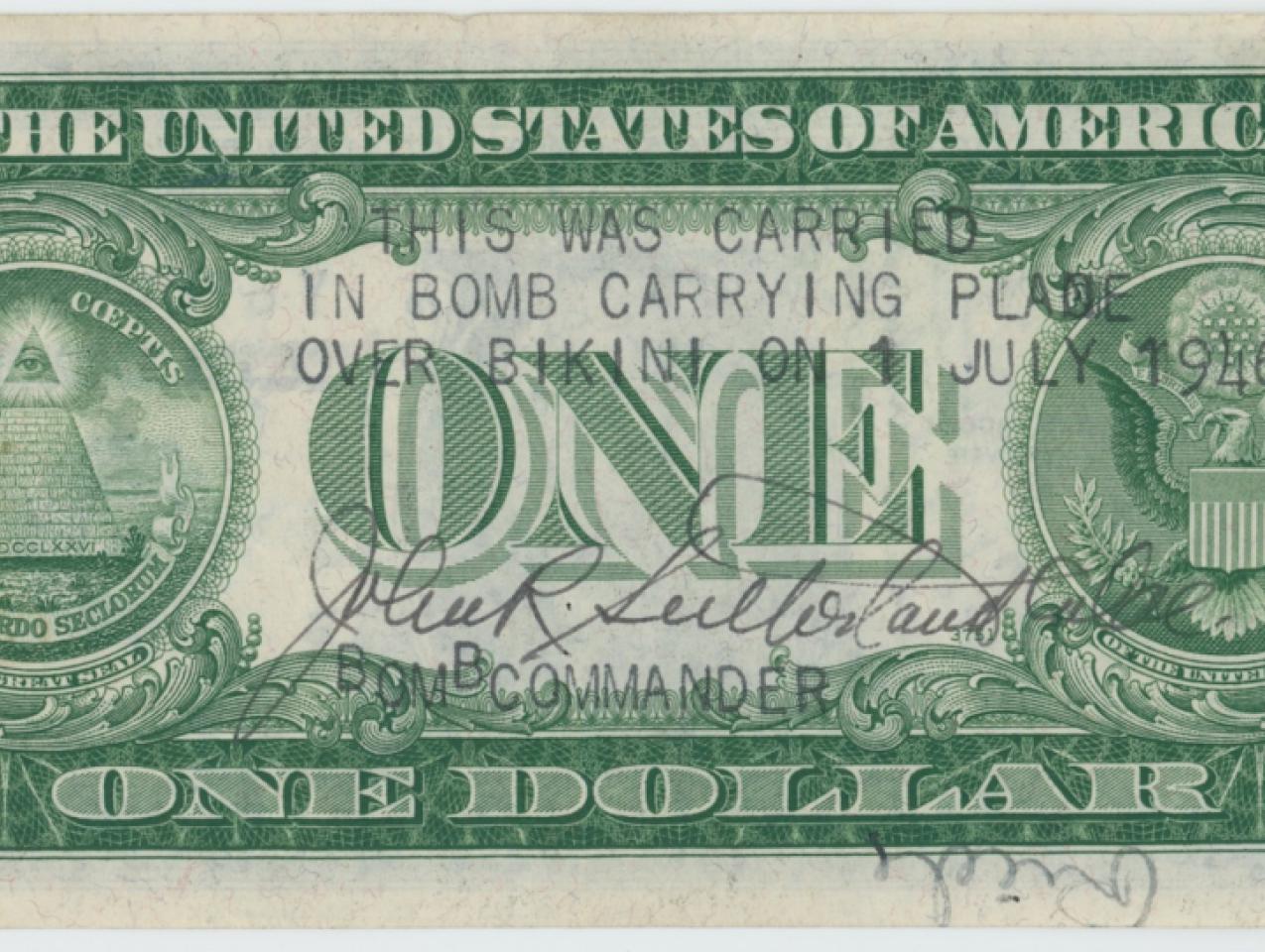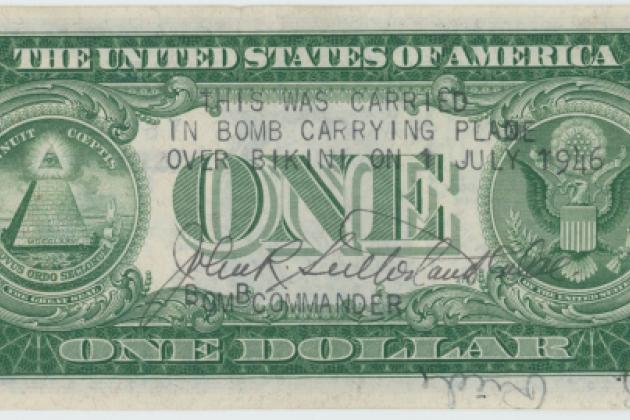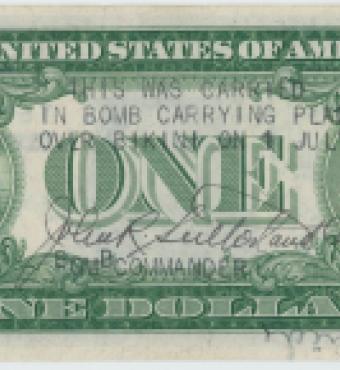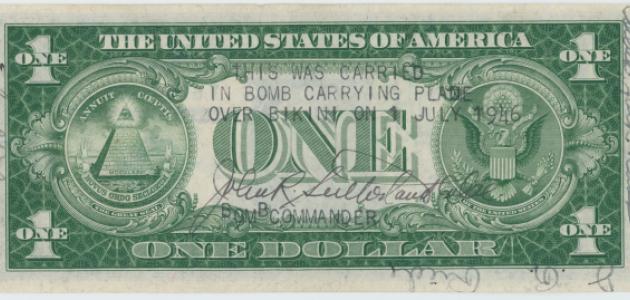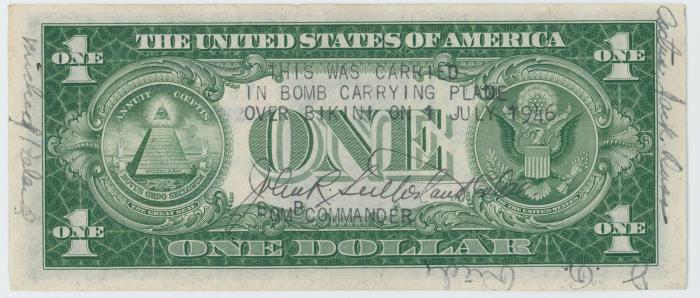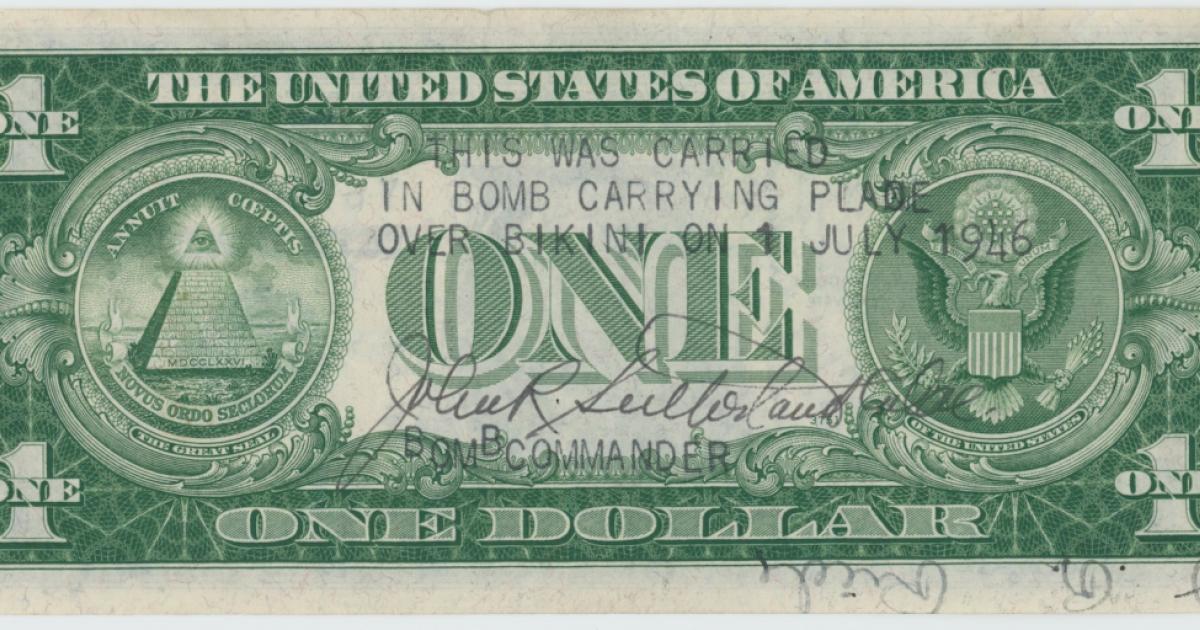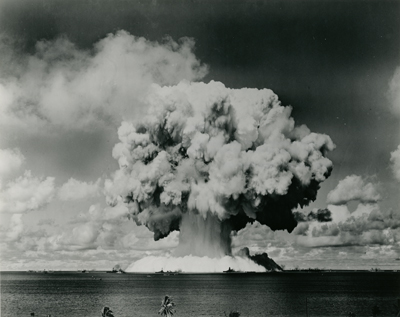
This week Hoover Library & Archives announces the public release of rare and unique sound recordings that document the July 1946 detonation of nuclear bombs on the Bikini Atoll in the Marshall Islands—one of the most significant events in the history of nuclear energy. The recordings, part of Hoover’s United States Foreign Broadcast Intelligence Service records, detail the preparation, process, and aftermath of the nuclear testing known seventy years ago as “Operation Crossroads.” Since the first detonation on July 1, 1946, the Bikini Atoll tests have become emblematic of the dawn of the nuclear age and the beginning of the Cold War. The Manhattan Project team described the Bikini Atoll detonations as "the most publicly advertised secret test ever conducted."
According to military records, the primary objective for the tests was to gauge how ships would withstand a nuclear blast. The remote Bikini Atoll, sparsely populated with citizens whom the military convinced to relocate, was chosen for its distance from established shipping lines. The military populated the deep lagoon surrounding the island with damaged ships from World War II, including many captured from Germany and Japan. A total of 94 vessels, ranging widely in size and make, surrounded the coastline during the tests, and carried ammunition, vehicles, and equipment—as well as mice, guinea pigs, and rats that would be tested for radiation levels following detonations. A total of 42,000 people, including military personnel, scientists, technicians, and independent contractors assembled to witness the blasts.
The military detonated a first bomb, “Able,” from the air, and a second, “Baker,” underwater. In both cases, the destructive fallout exceeded the expectations of the military. Able sank five ships, contaminated the remaining ships, and supplied lethal doses of radiation to the animals on board. The Baker bomb, however, proved even more destructive, causing a base surge and tsunami that sank nine ships, emitting nuclear fallout that contaminated nearly every ship of the fleet. The radiation levels far surpassed what the military anticipated, and many of the servicemen working on the tests were exposed to dangerous levels of radiation. A third test, Charlie, was planned but abandoned after the results of Able and Baker.
Seventy years after the initial tests on Bikini Atoll, the island remains a symbol of the dangers and consequences of nuclear testing. The geologic and environmental damages caused by the Bikini Atoll nuclear tests still affect the island today.
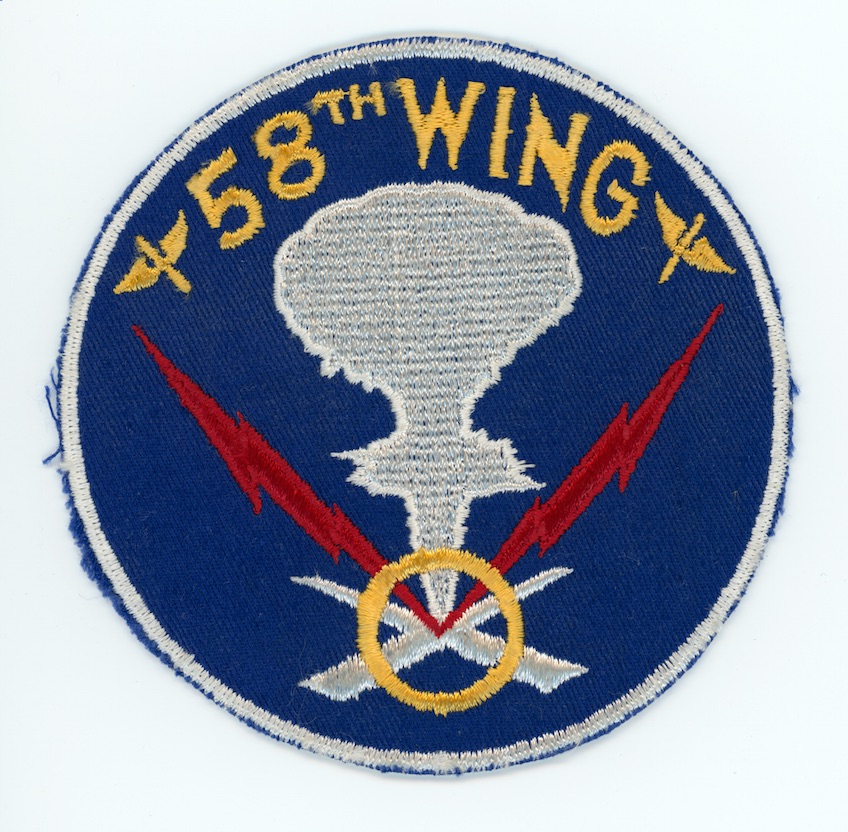
In addition to the 1946 broadcasts below, materials related to the Bikini Atoll nuclear tests, including photographs, newsletters, badges, and memorabilia kept by eyewitnesses, can be found in Hoover’s Beth Flippen Scheel, David Monroe Shoup, and Bonner Frank Fellers collections. A selection of these materials appear in the slideshow in the right sidebar.




